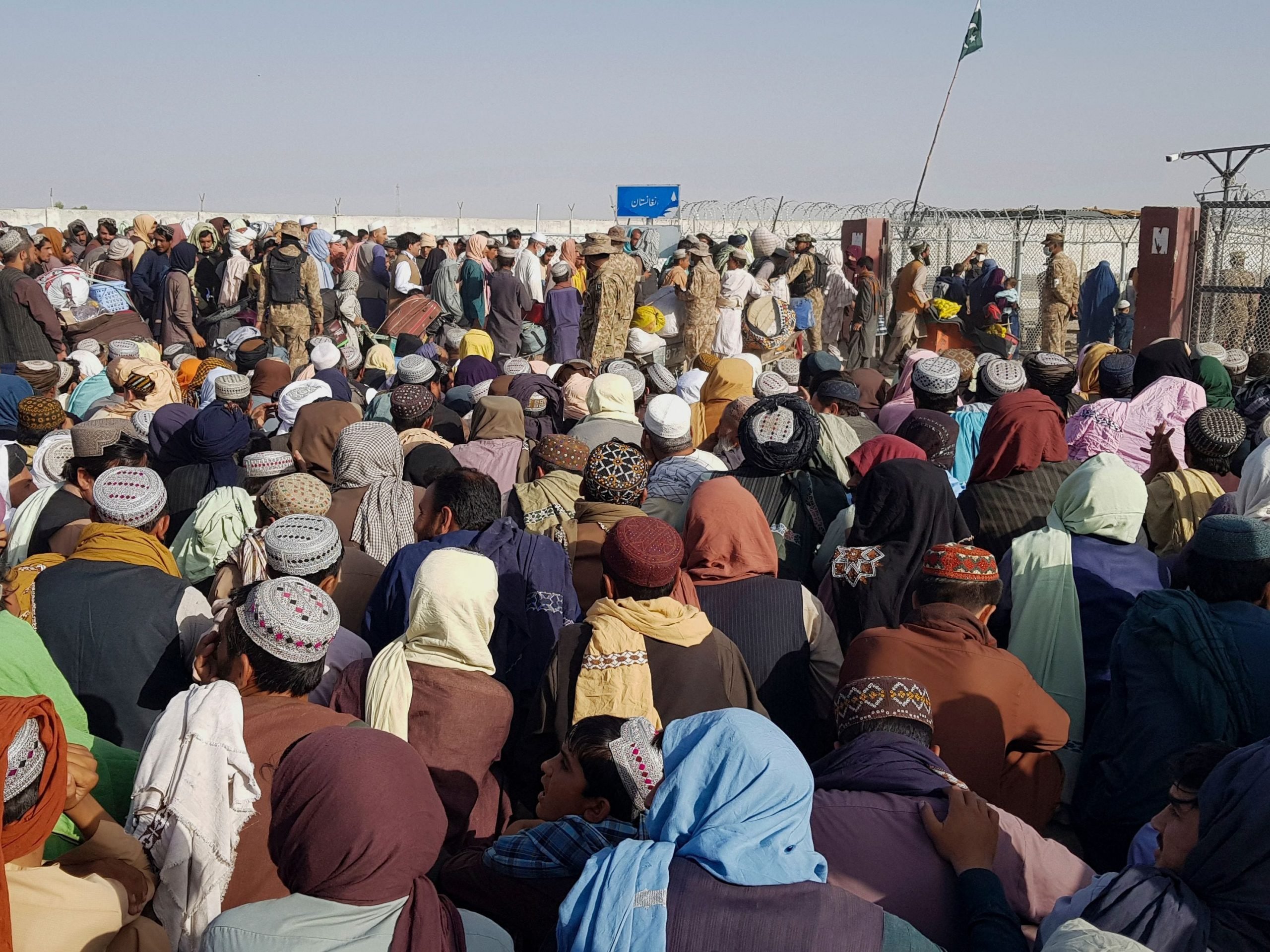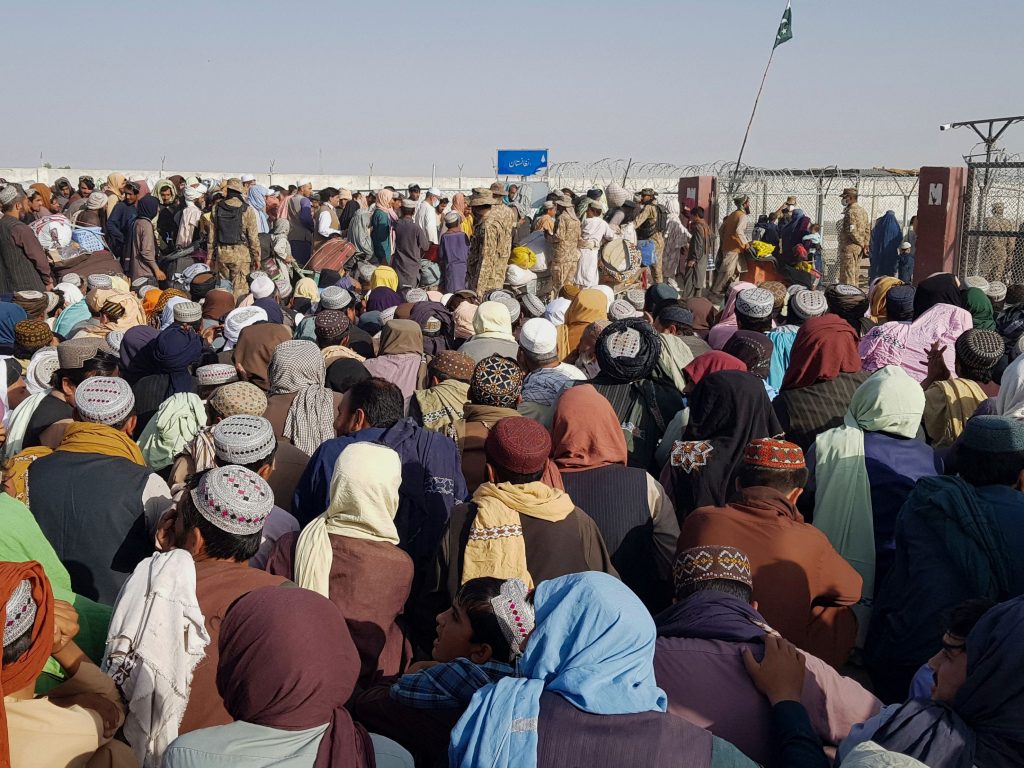
Stringer/AFP via Getty Images
- Thousands of people have flooded a border crossing dividing Afghanistan and Pakistan.
- However, the Pakistan government has deployed its military forces to keep Afghan refugees out.
- Pakistan said in July that it would not accept any more Afghan refugees.
- Visit Insider's homepage for more stories.
Videos show a sea of thousands of people gathered en-masse near a south-western Pakistani border crossing in a desperate bid to flee Afghanistan.
Afghanistan and Pakistan share a 1,640-mile frontier, and one of the two key crossings is at the border town of Spin Boldak, near the Pakistani city of Chaman. People were seen flooding the area this week in an attempt to cross over to Pakistan, though it is unclear how many of these people are Pakistanis looking to get home and how many are Afghan refugees hoping to be let in.
-Natiq Malikzada (@natiqmalikzada) August 25, 2021
Another border crossing between Afghanistan and Pakistan is located 580 miles from Chaman in Torkham, off the north-western Pakistani province of Khyber Pakhtunkhwa. The entire stretch of land that divides the two nations is policed by the Pakistani Frontier Constabulary, a militia under the management of Pakistan's government.
The Afghanistan-Pakistan border crossing at Spin Boldak was fully re-opened on August 21, per Reuters, after the crossing was shut down for a week when the Afghanistan capital of Kabul fell to Taliban militants on August 15. Trucks containing commercial goods can now cross the border after the Pakistani government engaged the Taliban in two rounds of negotiations.
However, the Spin Boldak border being operational does not mean that Pakistan plans to let a fresh wave of Afghan refugees in.
According to Nikkei Asia, Pakistan would need to spend $2.2 billion over the next three years to build encampments to house displaced people, assuming that the country only lets in around 700,000 to 800,000 more Afghan citizens. This would take a toll on Pakistan's economy, particularly after its Gross Domestic Product (GDP) hit a six-year low in 2020.
Pakistan's National Security Adviser Moeed Yusuf told media outlet VOA News in a July 13 interview that Pakistan would not accept any more refugees from Afghanistan.
"We are willing to help, but we are in no position to take in new refugees this time around. The international forces and the UN should make arrangements for them inside Afghanistan," Yusuf told VOA News, adding that the UN should "set up camps for the refugees on the Afghan side of the border."
That position does not appear to have changed. Pakistan on July 24 announced that it was deploying paramilitary troops to prevent illegal border crossings by Afghan refugees and Taliban fighters alike.
However, Pakistan made allowances in the last week for thousands of Afghans to cross over through the Spin Boldak-Chaman border, as long as they were carrying documents that proved they were already a registered Afghan refugee resident in Pakistan, reported Al Jazeera.
The Pakistani government did not immediately respond to a request for comment from Insider on how it plans to manage the current situation at the Spin Boldak-Chaman border.
Pakistan has a history of admitting Afghan refugees that dates back to 1979. In 2001, there were over four million Afghan refugees in Pakistan.
While many of these refugees are thought to have returned to Afghanistan over the last two decades, the UN estimates that Pakistan currently hosts more than 1.4 million registered Afghan refugees. Pakistani officials estimate a far higher tally of 3 million Afghan refugees, taking into account some 1.5 million undocumented immigrants.
